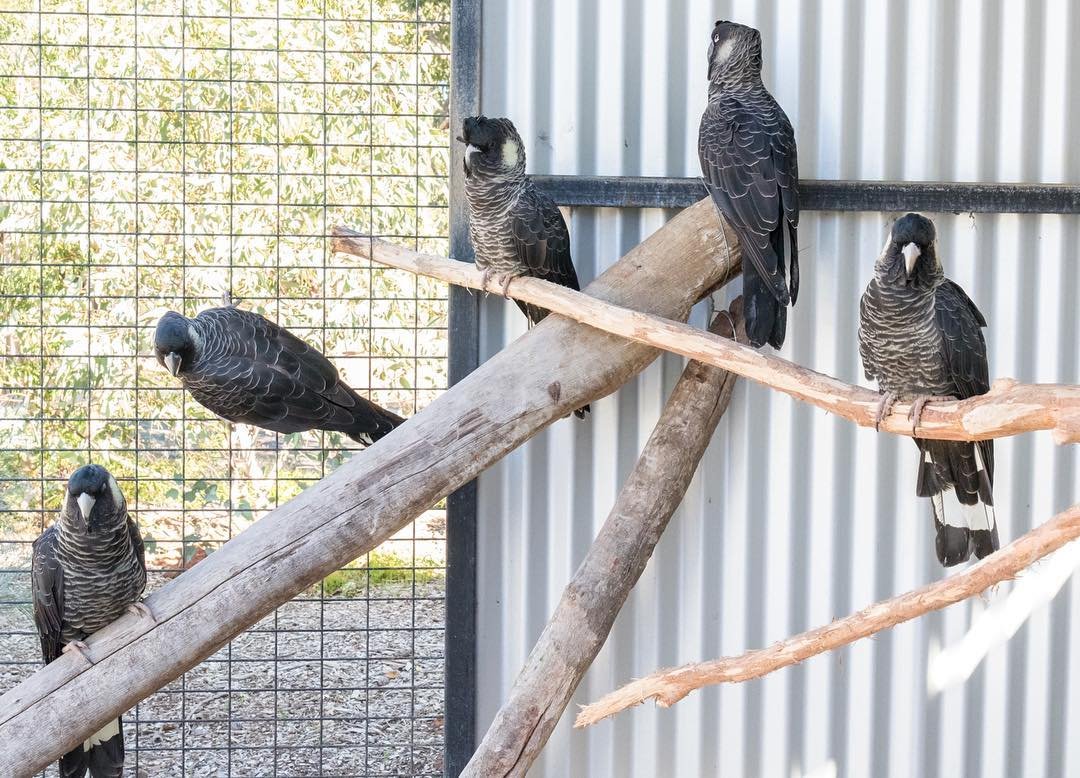White-Tailed Black Cockatoo
Our adult White-Tailed Black Cockatoo parrots are hand-raised, well-tamed, and highly socialized, making them ideal lifelong companions. These majestic birds typically weigh between 500 to 800 grams and boast a striking jet-black plumage with distinctive white tail panels, large curved beaks, and expressive dark eyes. Measuring around 55 to 60 cm (22–24 inches) in length, they have a strong, graceful presence and an intelligent, affectionate temperament that thrives on human interaction. Perfect for experienced bird lovers looking for a rare and deeply bonded parrot.
Original price was: 1,900.00$.1,500.00$Current price is: 1,500.00$.
Description
White-Tailed Black Cockatoo Parrot for Sale – Hand-Raised with Love at Exotic Parrots Home
Welcome to Exotic Parrots Home, your trusted breeder of rare and exquisite parrots. We are proud to offer White-Tailed Black Cockatoo parrot for sale, a stunning and intelligent species known for its majestic appearance, strong personality, and deep emotional connection with its owner. These captivating birds are raised with exceptional care, and we provide full CITES permits for legal and ethical ownership. We also offer worldwide shipping, so no matter where you are, your dream bird can find its way to you.
About the White-Tailed Black Cockatoo
Originating from the southwestern regions of Western Australia, the White-Tailed Black Cockatoo (also known as Carnaby’s Cockatoo or Baudin’s Cockatoo depending on the species) . It is part of a unique genetic lineage within the Calyptorhynchus genus. These cockatoos are distinguishable by their black plumage, long tails with striking white panels, and powerful beaks designed for cracking hard nuts and seeds.
Known for their intelligence, gentle demeanor, and loyal nature, White-Tailed Black Cockatoos form strong bonds with their human companions and thrive in interactive, enriching environments.
Why Choose Our White-Tailed Black Cockatoos?
-
Hand-Raised with Care – Our chicks are raised in a home-based aviary with constant socialization from day one, ensuring a well-adjusted and friendly companion.
-
CITES Permit Included – All our parrots are legal to own and come with proper documentation to ensure a smooth and secure ownership experience.
-
International Shipping Available – Whether you’re in the U.S., Canada, Europe, or Asia, we can safely deliver your parrot to your doorstep with specialized animal courier partners.
-
Vet-Checked & DNA-Sexed – Every cockatoo is vet-checked, microchipped, and comes with DNA sexing and health certificates.
Explore Our Full Collection of Cockatoos
At Exotic Parrots Home, we don’t just specialize in White-Tailed Black Cockatoos. We also breed and sell:
-
Red-Tailed Black Cockatoos
-
Galah Cockatoos (Rose-Breasted)
We ethically breed each species, raise them in a loving environment, and provide full support for new owners.
A Glimpse Into Their Genetic Heritage
White-Tailed Black Cockatoos are part of one of the most genetically unique cockatoo lineages. This breed has conservation efforts in the wild due to habitat loss. By choosing one from our aviary, you are not only gaining a lifelong friend but also supporting sustainable breeding programs. This program honors and protect the integrity of this remarkable species.
Ready to Welcome One Home?
As a first-time bird owner or an experienced exotic pet lover, the White-Tailed Black Cockatoo will deliver incomparable beauty and affection. From parrot selection to aftercare to lifelong assistance, Exotic Parrots Home helps.
Reserve yours today and bring home a parrot that’s as rare as it is remarkable.





Reviews
There are no reviews yet.